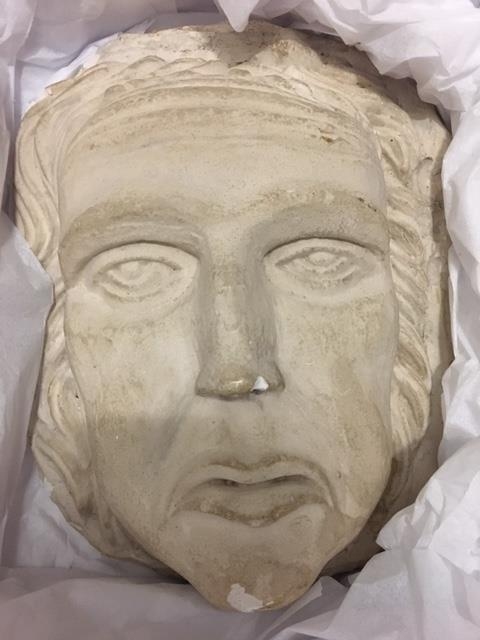Exploring Archives: The Quirky, Creepy, and Mystifying - Death Masks
Exploring Archives: The Quirky, Creepy, and Mystifying - Death Masks
Have you ever seen a death mask? Read about the history of this fascinatingly dark tradition.
By Megan Lockhart, Archives Technician
Local students and teachers who have been on a tour of the Oxford County Archives with their class will be familiar with one of the more unsettling items in our collection, the copy of Thomas Cook’s death mask. Thomas Cook was a labourer from Innerkip who was charged and convicted for the murder of his wife, Bridget Morin, on July 22, 1862. He was convicted (mostly based on character statements by his neighbours) and executed on December 16, 1862. Much to the shock and horror of onlookers, Cook was accidentally decapitated during his execution due to an issue with the setup of the gallows. It was decided that a death mask be made of his likeness after the execution. 
The mask was mounted at the entrance to the jail, where it can still be seen today (the Oxford County Gaol building now houses the Woodstock site of Southwestern Public Health). The mask stood as an example to citizens and would-be criminals that one must obey the law or you could end up like Thomas Cook. The Archives has a replica of the mask in our collection so a copy is available in the event that the original is ever damaged.
Death mask creation has a very long history. The Ancient Egyptians would take casts of a dead person’s face as part of a spiritual ritual and funeral rite. The Egyptians were not the only people to create death masks historically. Many other people and cultures took part in the practice of immortalizing a person’s face before or after death, masks taken of a person’s face while still alive are known as life masks. Death mask creation was practiced in Greece and Rome, Africa, and by the indigenous peoples of the Americas, among others.
Similar to the gruesome practice of displaying a head on a spike, which we commonly associate with the Middle Ages in Europe, death masks of hanged and executed criminals were sometimes created in Victorian England and publicly displayed to instill fear and discourage citizens from breaking the law or committing treasonous acts. There are stories of jail officials holding public lectures with these death masks to teach lessons on morality.
Occasionally, death masks of executed criminals were given to physicians for study purposes – often for the study of phrenology, which is a pseudoscience that involved the examination and measurements of the bumps on a person’s skull. The belief was that the personality traits of a person could be predicted by measuring the contours of the skull. Similar theories were developed during this period, and some physicians and academics believed that people with certain physical features of the face were predisposed to criminality. However, there is no sound empirical evidence to support this theory and it is often associated with classist, prejudiced, and racist perceptions.
